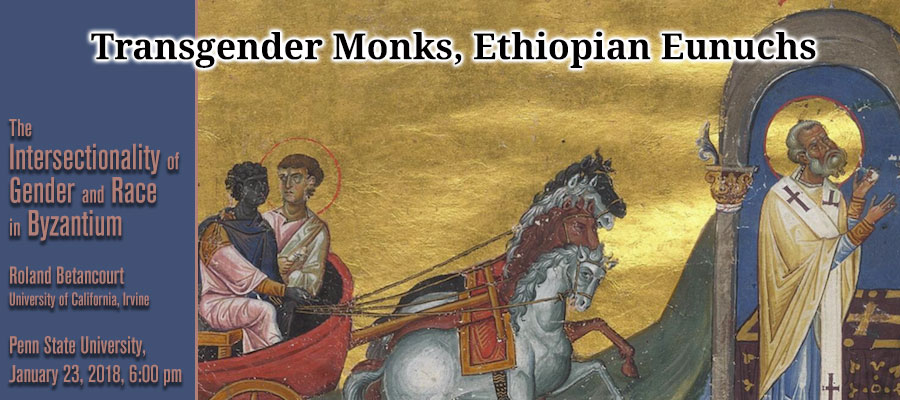Transgender Monks, Ethiopian Eunuchs: The Intersectionality of Gender and Race in Byzantium, lecture by Roland Betancourt (University of California, Irvine), Penn State University, January 23, 2018, 6:00 pm
The Penn State Department of Art History will host an upcoming Dickson Memorial Lecture, "Transgender Monks, Ethiopian Eunuchs: The Intersectionality of Gender and Race in Byzantium,” by Roland Betancourt, assistant professor of art history at the University of California, Irvine, at 6 p.m. on Jan. 23 at the Palmer Museum of Art's Palmer Lipton Auditorium on the University Park campus.
From the fifth to the ninth century, there are a series of saints’ Lives composed in the Greek-speaking Mediterranean that detail the lives of individuals assigned female at birth, who for a variety of reasons choose to live most their lives as monks, usually presenting as male and passing as eunuchs within monastic communities. This talk takes these lives and their popularity in later centuries as a starting point to consider the role of transgender and non-binary figures across the late-antique and Byzantine world, covering the Greek, Coptic and Syriac traditions. Weaving together saints’ lives, rhetorical treatises, letters and medical textbooks, this talk focuses on the host of bodily and medical practices deployed in the Byzantine world to alter or affirm a person’s gender identity. Through these lessons this talk will lead into a discussion of the intersectionality of racial and gender difference in Byzantium.
Roland Betancourt received his doctorate in 2014 from Yale University. He is co-editor of the volume Byzantium/Modernism: The Byzantine as Method in Modernity, and editor of special issues of postmedieval and West 86th. He has presented extensively at conferences, and his published work has appeared and is forthcoming in Greek, Roman and Byzantine Studies, Gesta, Dumbarton Oaks Papers, Orientalia Christiana Periodica, Word & Image, and others. His current research and methodology focus on both Byzantine and contemporary discourses on the ontological valences of the image and its temporality.
